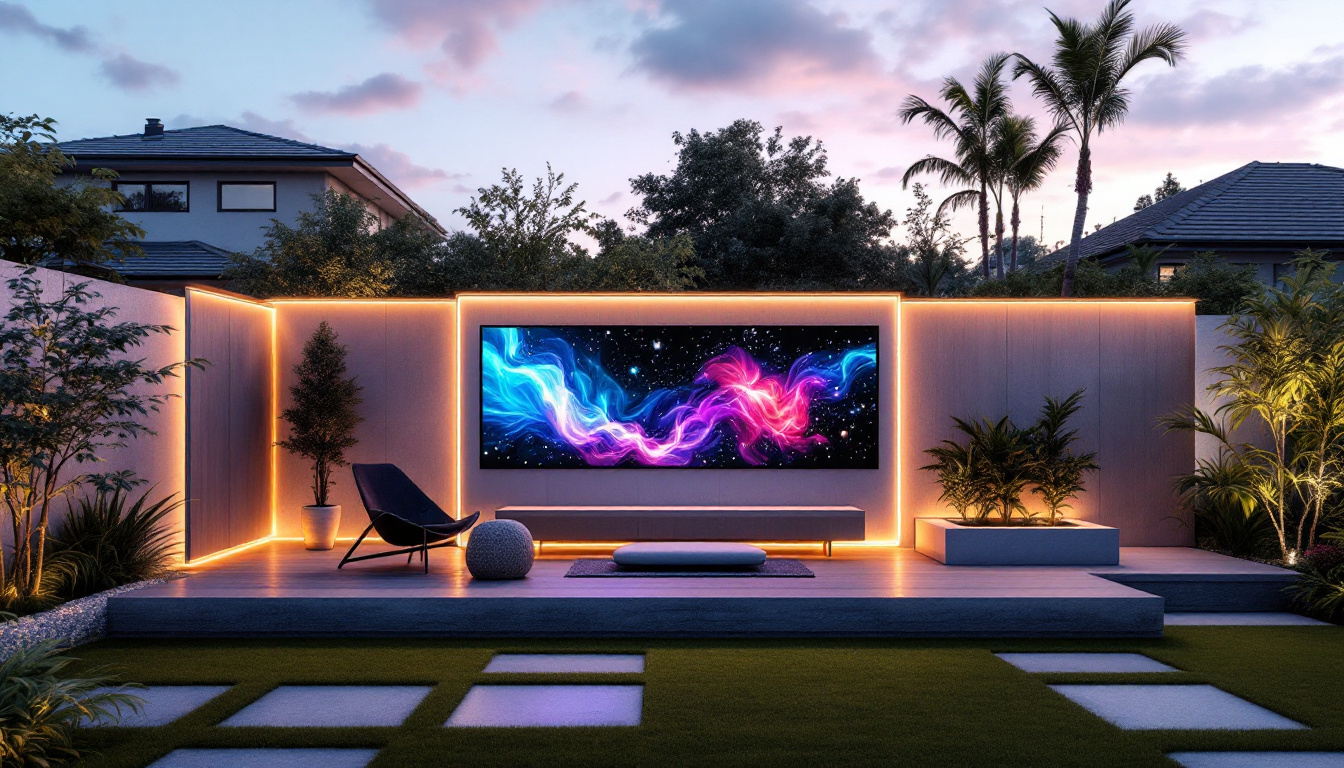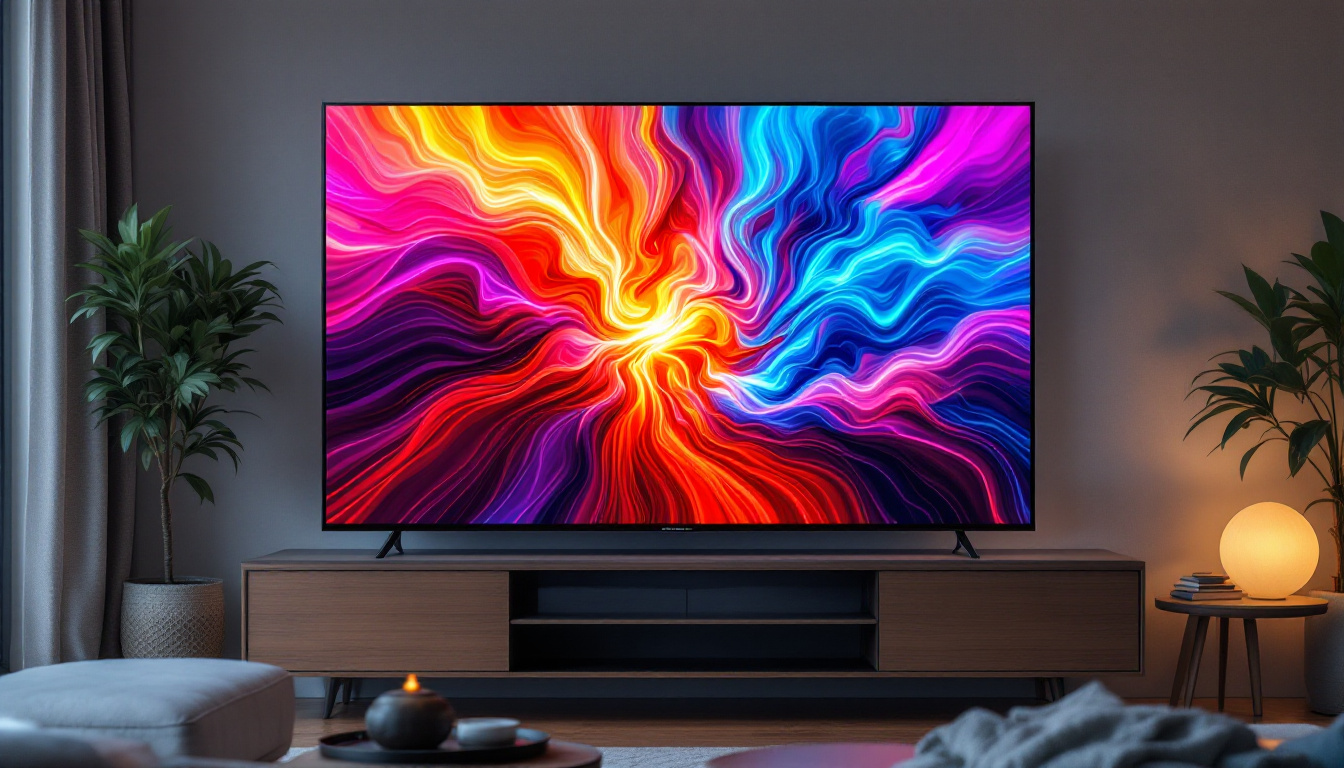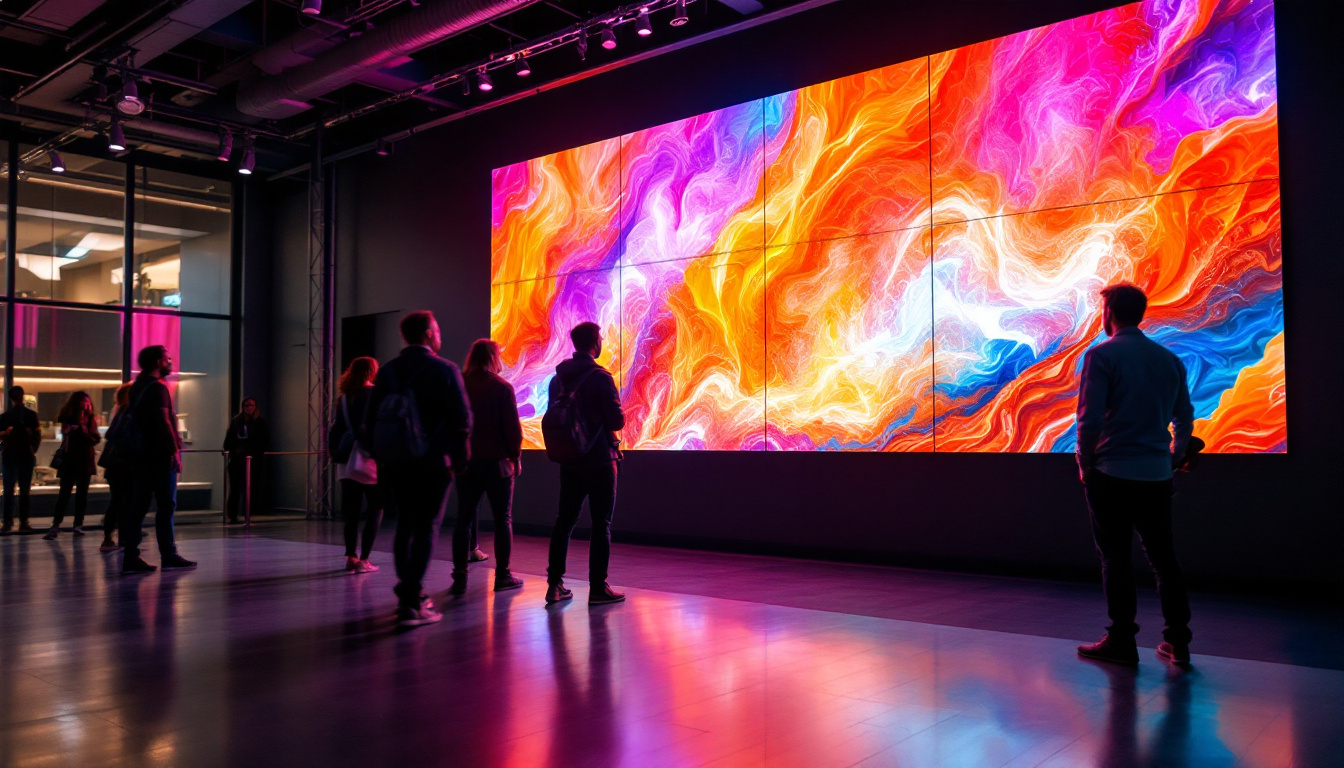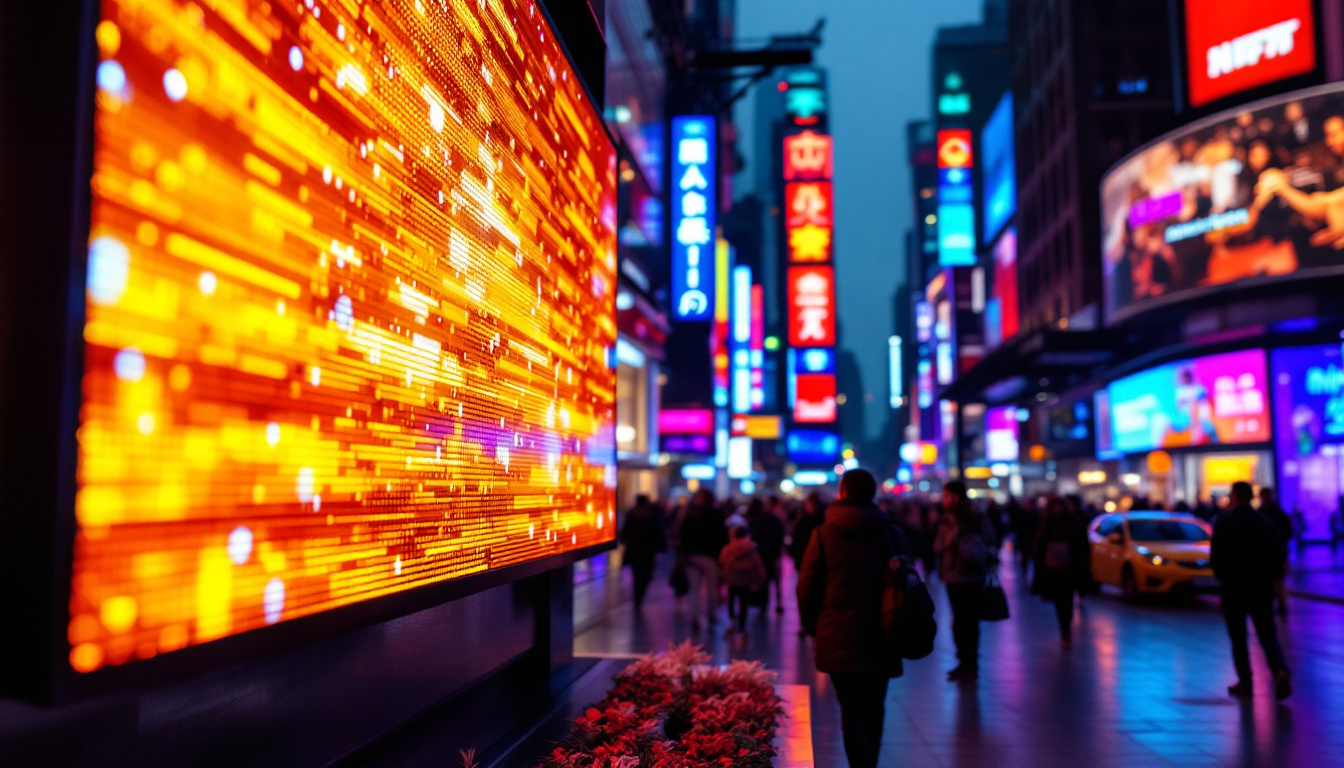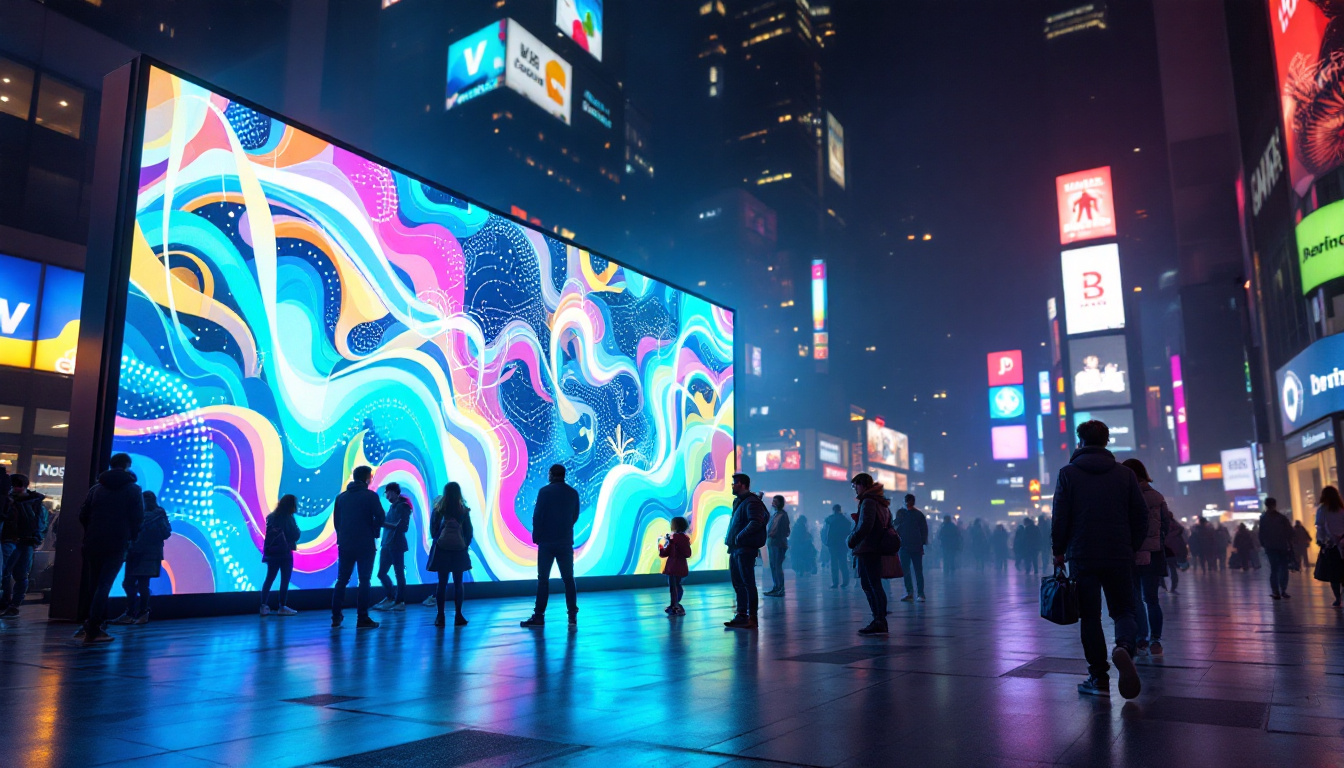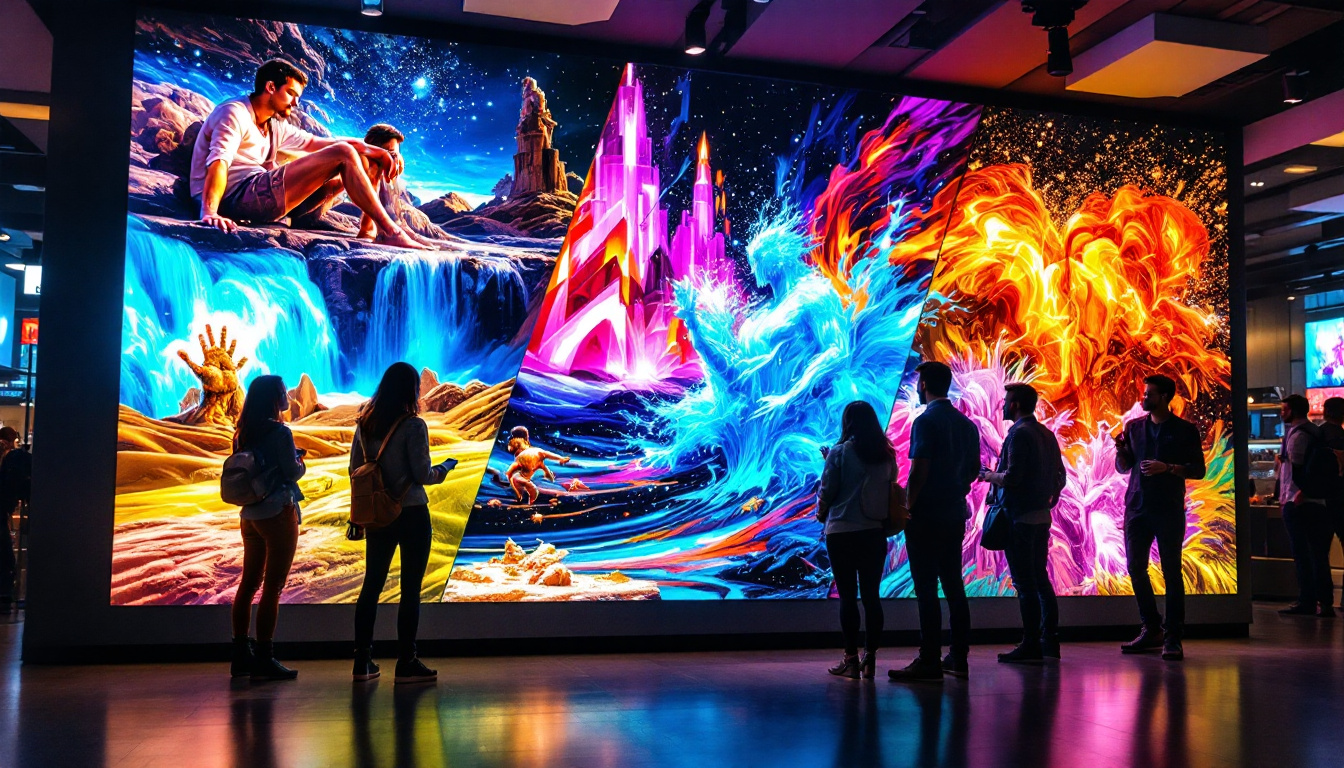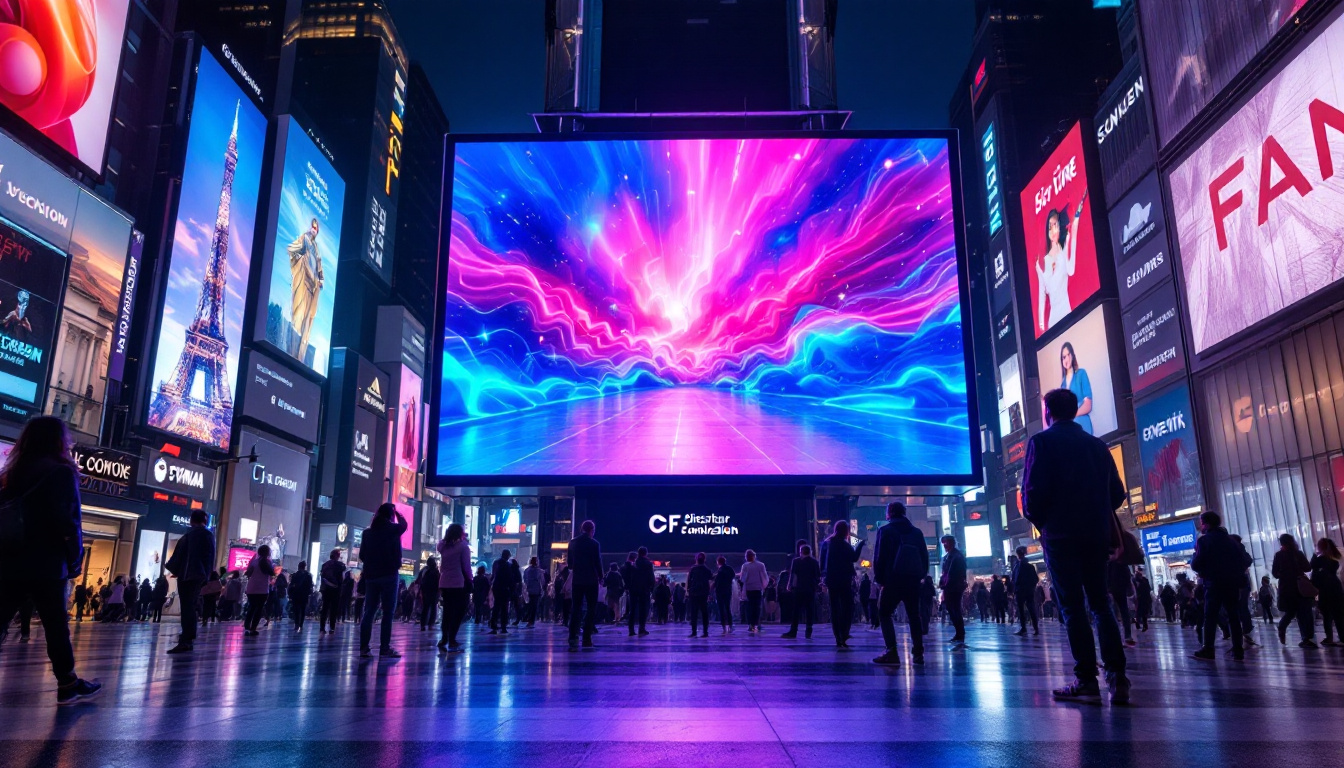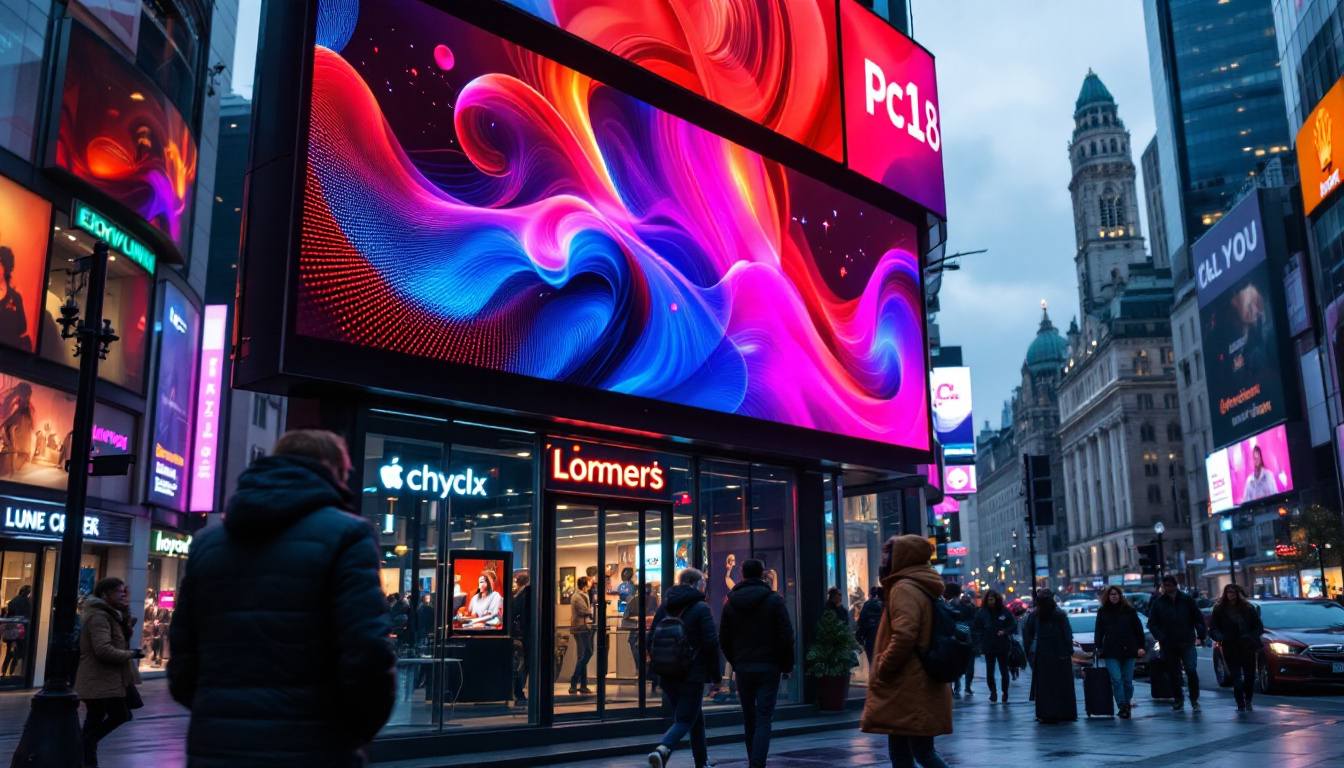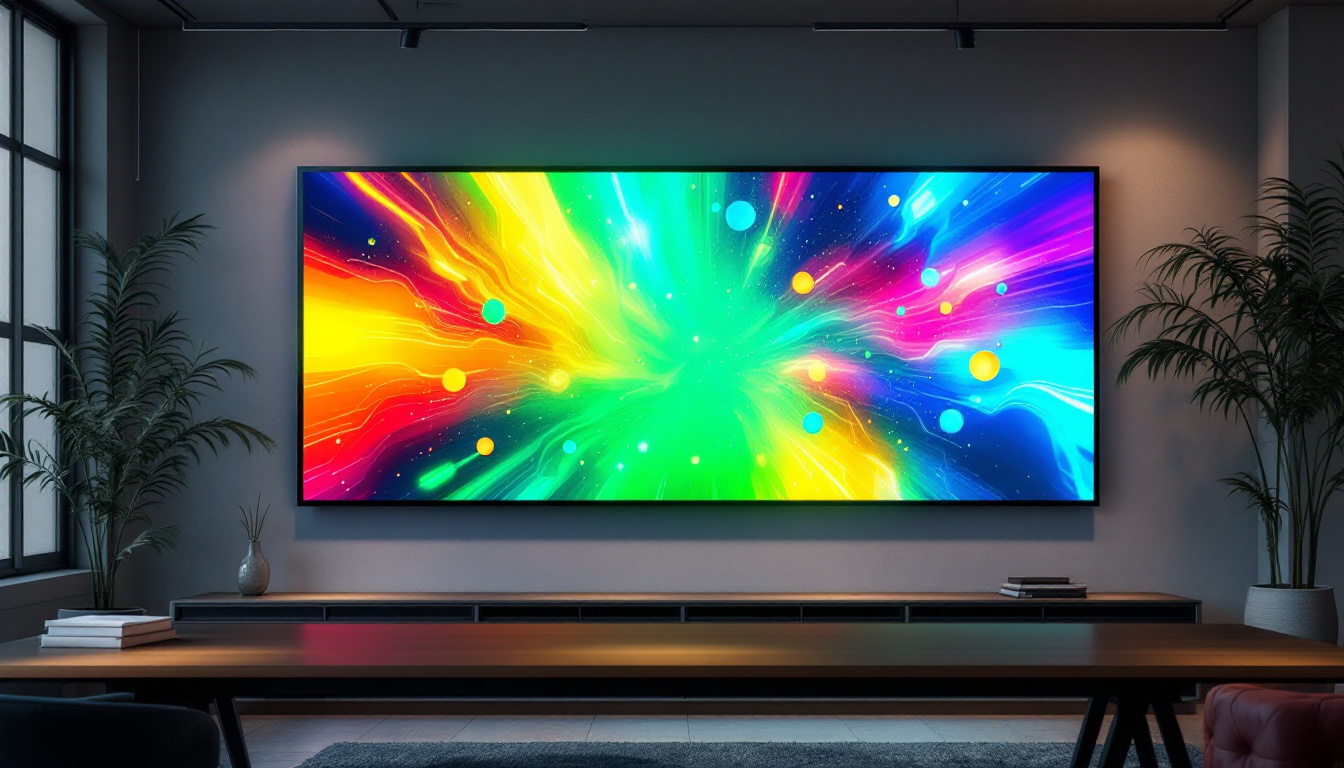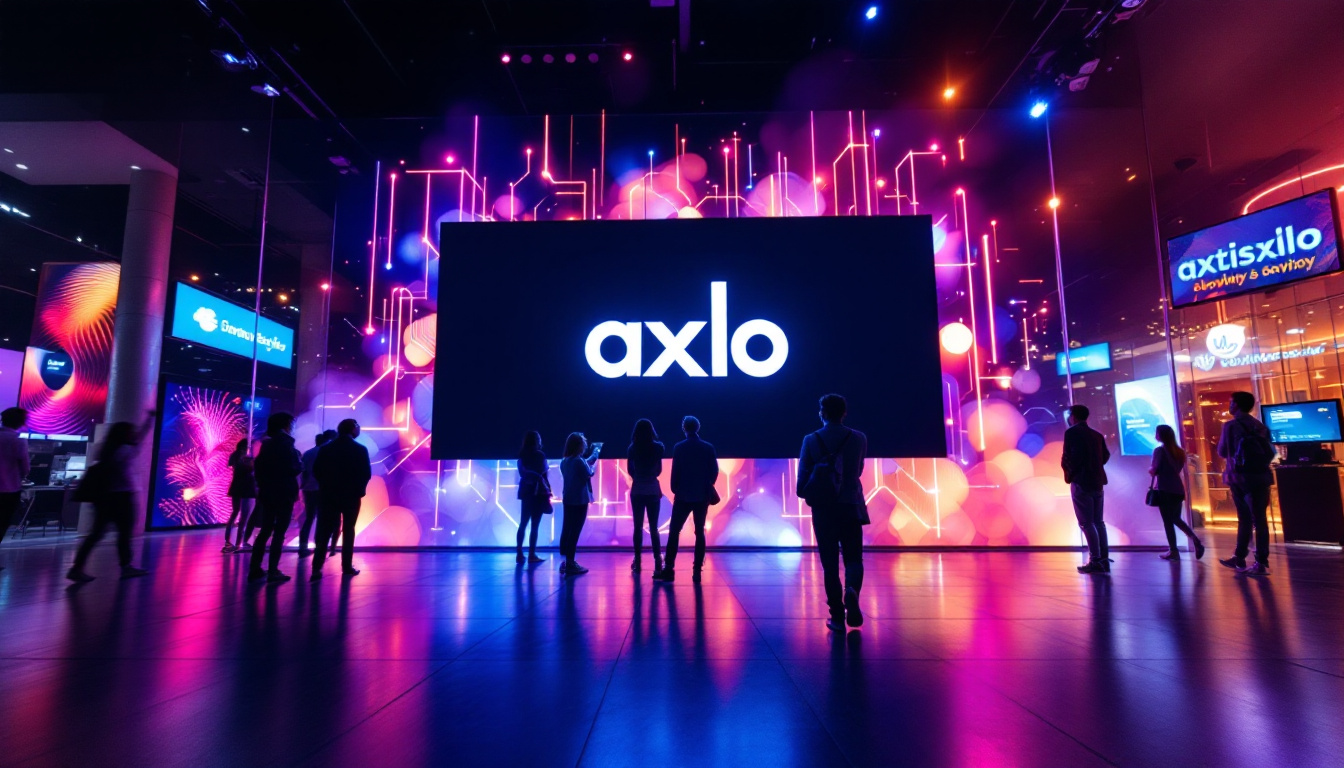In today’s fast-paced commercial environments, capturing customer attention quickly and effectively is crucial. Tabletop digital signage, particularly LED displays, has emerged as a powerful tool for businesses seeking to engage audiences at close range. From restaurants and retail stores to trade shows and corporate lobbies, these compact yet vibrant displays offer dynamic content delivery in a small footprint. This article explores the technology behind tabletop LED digital signage, its advantages, practical applications, and considerations for selecting the right solution.
Understanding Tabletop Digital Signage and LED Technology
What is Tabletop Digital Signage?
Tabletop digital signage refers to small-scale digital displays designed to sit on counters, tables, or desks. Unlike large wall-mounted screens or outdoor billboards, tabletop displays are intended for intimate viewing distances, typically within a few feet. Their size and placement make them ideal for environments where space is limited but visual impact remains essential.
These displays are commonly used to provide product information, promote special offers, display menus, or offer interactive experiences. Because they are digital, content can be updated remotely and frequently, allowing for dynamic messaging that adapts to changing needs. This flexibility not only enhances customer engagement but also allows businesses to tailor their messaging based on real-time analytics, ensuring that the content is always relevant and appealing to the audience.
In addition to retail environments, tabletop digital signage is increasingly being adopted in various sectors such as hospitality, healthcare, and education. For instance, hotels may use these displays in lobbies to showcase local attractions or events, while restaurants can highlight daily specials or new menu items. The ability to incorporate multimedia elements, such as videos or animations, further enriches the viewer’s experience, making the signage not just informative but also entertaining.
How LED Displays Work
LED, or Light Emitting Diode, technology is the foundation of many modern digital signage solutions, including tabletop models. An LED display is composed of numerous tiny diodes that emit light when an electric current passes through them. These diodes are arranged in a matrix to form images, videos, or text.
Compared to traditional LCD screens, LED displays offer several advantages: higher brightness, better contrast, wider viewing angles, and improved energy efficiency. These qualities make LED displays especially suitable for environments with variable lighting conditions, such as brightly lit retail counters or outdoor kiosks. Furthermore, the longevity of LED technology means that these displays can operate for thousands of hours without significant degradation in quality, making them a cost-effective choice for businesses looking to invest in long-term solutions.
Another significant aspect of LED displays is their ability to produce vibrant colors and deep blacks, which enhances the overall visual experience. This capability is particularly beneficial in settings where capturing attention is critical, such as trade shows or promotional events. Additionally, advancements in LED technology have led to the development of flexible and curved displays, allowing for innovative designs that can fit into a variety of spaces and applications.
Types of LED Displays Used in Tabletop Signage
Tabletop digital signage primarily utilizes two types of LED technology: direct-view LED and LED-backlit LCD.
- Direct-view LED: This type uses LEDs as the actual pixels that create the image. It is known for exceptional brightness and color vibrancy. However, direct-view LED displays are typically larger and more expensive, so their use in tabletop formats is less common but growing as technology miniaturizes. These displays can often be found in high-end retail environments or at events where maximum visual impact is desired.
- LED-backlit LCD: This is the more prevalent technology in tabletop signage. Here, an LCD panel displays the image, while LEDs provide the backlighting. This combination offers good image quality with lower power consumption and cost, making it ideal for compact digital signage. The versatility of LED-backlit LCD displays allows them to be easily integrated into existing setups, whether as standalone units or part of a larger digital signage network.
Moreover, the choice between these two types of displays often depends on the specific needs of the business. For instance, a café looking to display daily specials may prioritize cost-effectiveness and ease of use, favoring LED-backlit LCDs. In contrast, a luxury brand aiming to create a striking visual statement might opt for direct-view LED technology to ensure their products are showcased in the best possible light. As technology continues to evolve, we can expect even more innovative solutions that blend functionality with aesthetic appeal, further enhancing the role of tabletop digital signage in various industries.
Benefits of Using LED Tabletop Digital Signage
Enhanced Visual Impact
One of the primary benefits of LED tabletop signage is its ability to deliver bright, vivid visuals that stand out in busy environments. LEDs can produce a wide color gamut and high contrast ratios, ensuring that content is eye-catching and legible from various angles.
For example, a restaurant using LED tabletop displays to showcase daily specials or nutritional information can attract customer attention more effectively than static printed menus. The dynamic nature of digital content also allows for animations or video clips that further engage viewers.
Energy Efficiency and Longevity
LED technology is renowned for its energy efficiency. Compared to older display technologies, LED-backlit LCDs consume significantly less power, reducing operational costs over time. This is particularly important for businesses running multiple displays continuously throughout the day.
Additionally, LEDs have a longer lifespan than traditional lighting, often lasting tens of thousands of hours before needing replacement. This durability translates to lower maintenance costs and less downtime, making LED tabletop signage a reliable investment.
Flexibility and Content Management
Digital signage powered by LED displays offers unparalleled flexibility. Content can be updated remotely via cloud-based management platforms, enabling businesses to tailor messaging based on time of day, audience demographics, or promotional campaigns.
For instance, a retail store might display product promotions during peak shopping hours and switch to brand storytelling or customer testimonials during quieter periods. This adaptability ensures that the signage remains relevant and maximizes return on investment.
Compact and Space-Saving Design
Tabletop LED displays are designed to fit seamlessly into environments where space is at a premium. Their slim profiles and lightweight construction allow them to be placed on counters, reception desks, or event tables without obstructing workflow or aesthetics.
This compactness is particularly advantageous for small businesses or venues that cannot accommodate large signage but still want to leverage digital communication tools.
Applications of Tabletop LED Digital Signage
Hospitality and Food Service
Restaurants, cafes, and bars have been early adopters of tabletop digital signage. LED displays on tables or counters can present menus, highlight specials, or promote upcoming events. Some establishments integrate interactive features, allowing customers to place orders or request assistance directly from the display.
Moreover, digital tabletop signage can enhance the ambiance by displaying themed visuals or seasonal promotions, contributing to a memorable dining experience.
Retail Environments
In retail stores, tabletop LED signage serves as a powerful tool for product promotion and customer engagement. Placed near checkout counters or product displays, these screens can showcase discounts, new arrivals, or brand messages.
Interactive tabletop displays can also facilitate customer feedback collection or guide shoppers through product features, improving the overall shopping journey.
Corporate and Event Settings
Corporate lobbies and trade shows benefit from tabletop digital signage by providing visitors with information, directions, or schedules. LED displays offer a professional and modern touch that enhances brand perception.
During conferences or exhibitions, tabletop signage can be used to display speaker bios, session times, or sponsor advertisements, ensuring attendees have access to relevant information at their fingertips.
Choosing the Right Tabletop LED Display
Screen Size and Resolution
Selecting the appropriate screen size depends on the viewing distance and the amount of information to be displayed. Tabletop signage typically ranges from 7 to 15 inches diagonally. Higher resolution screens provide sharper images and better readability, especially for text-heavy content.
For environments where customers are expected to view the display closely, investing in Full HD (1080p) or higher resolution is advisable to ensure clarity and professionalism.
Brightness and Viewing Angles
Brightness is a critical factor, particularly in well-lit or outdoor settings. LED displays generally offer brightness levels between 300 to 1000 nits, with higher values ensuring visibility under direct sunlight or bright indoor lighting.
Wide viewing angles are essential for tabletop signage, as viewers may approach from different directions. Look for displays with IPS (In-Plane Switching) panels or similar technology that maintain color accuracy and contrast across broad angles.
Connectivity and Content Management
Modern tabletop LED signage solutions support various connectivity options, including Wi-Fi, Ethernet, and USB. Wireless connectivity enables seamless content updates without physical access to the device, a significant convenience for busy businesses.
Choosing a system compatible with a robust content management system (CMS) allows for scheduling, remote updates, and analytics, empowering businesses to optimize their digital signage strategy.
Durability and Design
Since tabletop displays are often placed in high-traffic areas, durability is essential. Look for models with sturdy housings, scratch-resistant screens, and stable bases to prevent accidental tipping or damage.
Additionally, the design should complement the environment’s aesthetic. Sleek, minimalist designs with customizable bezels or branding options can enhance the overall customer experience.
Future Trends in Tabletop LED Digital Signage
Integration with Interactive Technologies
The future of tabletop digital signage lies in interactivity. Touchscreen capabilities, gesture controls, and voice recognition are increasingly being integrated into LED displays, transforming passive signage into engaging customer touchpoints.
This evolution enables personalized experiences, such as product customization, self-service ordering, or interactive advertising, driving deeper customer engagement and satisfaction.
Artificial Intelligence and Data-Driven Content
Artificial intelligence (AI) is beginning to play a role in digital signage by analyzing viewer behavior and tailoring content accordingly. For tabletop displays, this means content can adapt in real-time based on factors like time of day, customer demographics, or even emotional responses detected through sensors.
Such data-driven approaches maximize the effectiveness of signage campaigns and provide valuable insights for marketing strategies.
Sustainability and Energy Efficiency
As sustainability becomes a priority, manufacturers are focusing on reducing the environmental impact of digital signage. Advances in LED technology continue to improve energy efficiency, and recyclable materials are increasingly used in display construction.
Businesses can benefit from lower energy costs and align with eco-friendly values by choosing sustainable tabletop LED signage solutions.
Conclusion
Tabletop digital signage powered by LED displays offers a compelling combination of visual impact, flexibility, and efficiency. Its compact form factor makes it ideal for a variety of environments where engaging customers at close range is essential. By understanding the underlying technology, benefits, and application scenarios, businesses can make informed decisions that enhance communication and drive results.
As LED technology continues to evolve and integrate with interactive and AI-driven features, tabletop digital signage will become an even more versatile and powerful tool. Investing in the right LED display today can position businesses to capitalize on these advancements and create memorable, dynamic customer experiences.
Discover the Future of Visual Engagement with LumenMatrix
Ready to elevate your customer experience with cutting-edge tabletop LED digital signage? LumenMatrix is at the forefront of LED display innovation, offering a wide range of solutions that bring your brand to life. From captivating Indoor LED Walls to dynamic Vehicle LED Displays and beyond, our mission is to transform your visual communication with clarity and impact. Don’t miss the opportunity to engage and captivate your audience. Check out LumenMatrix LED Display Solutions today and step into the future of digital signage.














